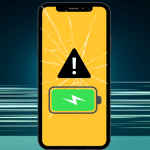QR Code Phishing Scams
In a world that constantly evolves, cybercriminals are always ready to innovate, employing new tactics to steal our personal information. Recently, there’s been a noticeable increase in scammers using QR Code Phishing Scams in their phishing campaigns. Here’s everything you need to know to better protect yourself.
Understanding QR Code Phishing Scams
QR codes have gained immense popularity for their convenience, allowing users to quickly access websites, make payments, or download apps by simply scanning the code with their smartphones. However, this convenience comes with risks. Cybercriminals are now creating malicious QR codes that lead unsuspecting users to fraudulent websites designed to steal sensitive information, such as usernames, passwords, or financial details.
How QR Code Phishing Works
- Creating Fake QR Codes: Scammers generate QR codes that redirect users to phishing sites or download malware onto their devices. These codes can be printed on flyers, posters, or even shared through social media.
- Distribution: Scammers distribute these codes in high-traffic areas, at events, or through phishing emails, making them seem legitimate.
- Deceptive Landing Pages: Once scanned, the QR code leads to a fake website that mimics a trusted service, tricking users into entering personal information.
How to Protect Yourself from QR Code Phishing
- Be Cautious: Always be wary of QR codes from unknown sources. If a code looks suspicious or is placed in an unexpected location, don’t scan it.
- Check the URL: Before entering any information, check the URL of the website the QR code directs you to. Ensure it matches the legitimate site and starts with “https://” for added security.
- Use a QR Code Scanner App: Consider using a trusted QR code scanner that provides previews of the URLs before you visit them. This can help you identify potential scams.
- Keep Your Device Updated: Regularly update your smartphone’s operating system and security software to protect against vulnerabilities that scammers might exploit.
- Educate Others: Share this information with friends and family to raise awareness about the dangers of QR code phishing and how to avoid it.
- Report Suspicious Codes: If you encounter a QR code that seems suspicious, report it to the relevant authorities or organizations. This helps protect others from falling victim to scams.
Conclusion
As QR codes become more prevalent, it’s crucial to remain vigilant and informed about the risks they pose. By taking proactive measures and staying cautious, you can protect your personal information from cybercriminals who seek to exploit your trust. Always think twice before scanning a QR code, and prioritize your online safety.



